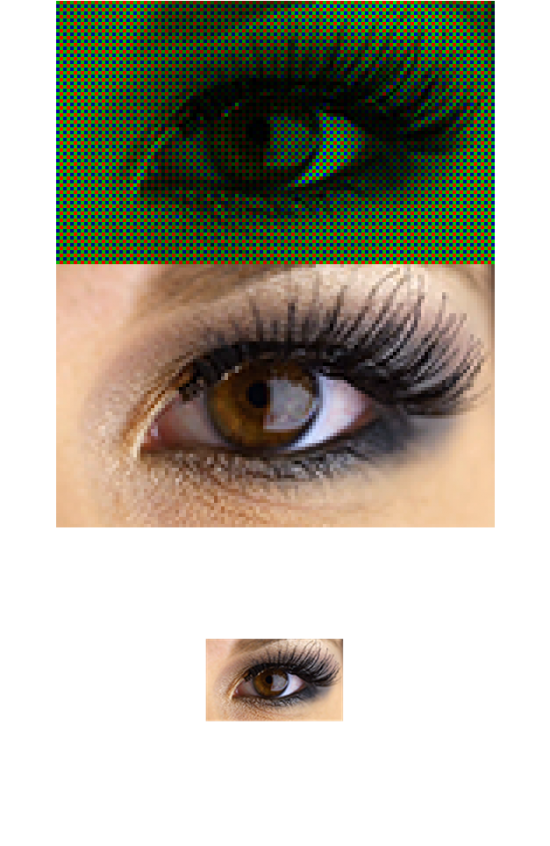August 12, 2016 – Aaron Foster is a Phoenix-based tech enthusiast. He specializes in digital cameras and accessories, Android mobile devices and PC hardware. He is today’s guest contributor here at 21st Century Tech blog and describes the role high definition and high resolution imaging is playing in business and our personal lives now and in the near future. This is his second contribution to this site. I invite you to comment.
———-
High-resolution imaging technology is here in the present and very much our future. Just like the transition from standard definition to high definition, the step to 4K and beyond will be equally significant.
From acquisition to delivery all of us stand to gain from this technological leap. For the film industry it means making camera movements never before possible and using all of the underlying data to produce state-of-the-art computer graphic images (CGI). Consumers will be able to purchase super high-resolution televisions that deliver the vibrancy and detail of real life. The technology will improve home security with ultra high-resolution cameras that produce usable images no matter the lighting conditions.
The Next Cinematic Revolution
Movie making was really the first industry to embrace HD video. Since the early 2000s when movies went digital, the use of film has largely disappeared. There are a number of reasons for this switch, one of them being relative cost. The standard roll of cinema-quality film cost several hundred dollars and only recorded about 11 minutes of shooting time. Compare that to high-capacity memory cards, which although they cost several hundred dollars, can record several times what a film roll is capable of doing and can be used repeatedly. Hard-drive prices have dropped as well from 9 cents per gigabyte (GB) to 6 since 2012. Solid-state drive prices have fallen from around $1 per GB to 25 cents during the same time frame. The result, digital is proving to be much more economical.
Identifying Crooks on Camera Will Be That Much Easier
The availability of HD and 4K cameras for security means the quality of images will significantly improve. No more grainy shots to try and enhance. The same advantages that cinema and television gain from high definition, high resolution, falling storage prices, and reusable media, all apply. High-resolution cameras have a decided advantage allowing the user to zoom in while still maintaining a full HD image. This means security companies can install wider lens technology and zoom in after the fact. The digitally recorded images leave nothing amiss. There is no longer a loss of clarity which can happen with optical zoom. And combining cameras with wider and longer lenses gives security installation a much better view of surrounding areas. The quality of a single frame from current 4K cameras is roughly equivalent to a 9 megapixel digital still frame. This means pulling still images of an intruder will produce enough detail for most people to identify them with some level of accuracy.
Television Content Will Look Better
Not only has film found 4K and HD content to be good, but so has television and not just the manufacturers but also the content creators. For every one pixel of HD, 4K has four. When combined with a Bayer Pattern Sensor, a device designed to capture red, green and blue colours in an image, it means any individual HD pixel produces images much richer in colour and brighter resolutions. Scaled-down content shot with this technology produces very sharp images which more accurately portray the colour. To see a sample look at the sequence of images presented below. The top image captured by the pattern sensor is at 400% resolution. The second image is full colour at the same resolution. The bottom image is full colour scaled to 100%. The quality of the images produced provide for rich colour and high definition.

While scaling down content gives a better image today, up-scaling should help make a better images in the future. A resolution jump from HD to 4K may not be happening in our near future. But instead images will be digitally improved by manipulating pixels.
Future HD Technology
Today 4K cameras can be found in the market. Higher resolution products may displace 4K in the near future. Or we may see manipulation of 4K cameras that use digital enhancements to produce even higher definition images. For example cameras like the Sony a6300 capture a 6K image but scale down the image to 4K output to display on existing screens. The images presented are of extremely high and sharp quality. For professional cinema, 8K capture is the next expected advancement. And like all technologies it will eventually find itself in the hands of consumers or integrated into smartphone technology.
Lens technology is also expected to improve. Harvard’s School of Engineering and Applied Sciences may be on the leading edge using nano-scale silicon “antennae” that can refract light like a curved glass lens. The flat lenses produced are so thin they appear almost two dimensional. Expect to see technology like this incorporated into future security cameras and smartphones.









